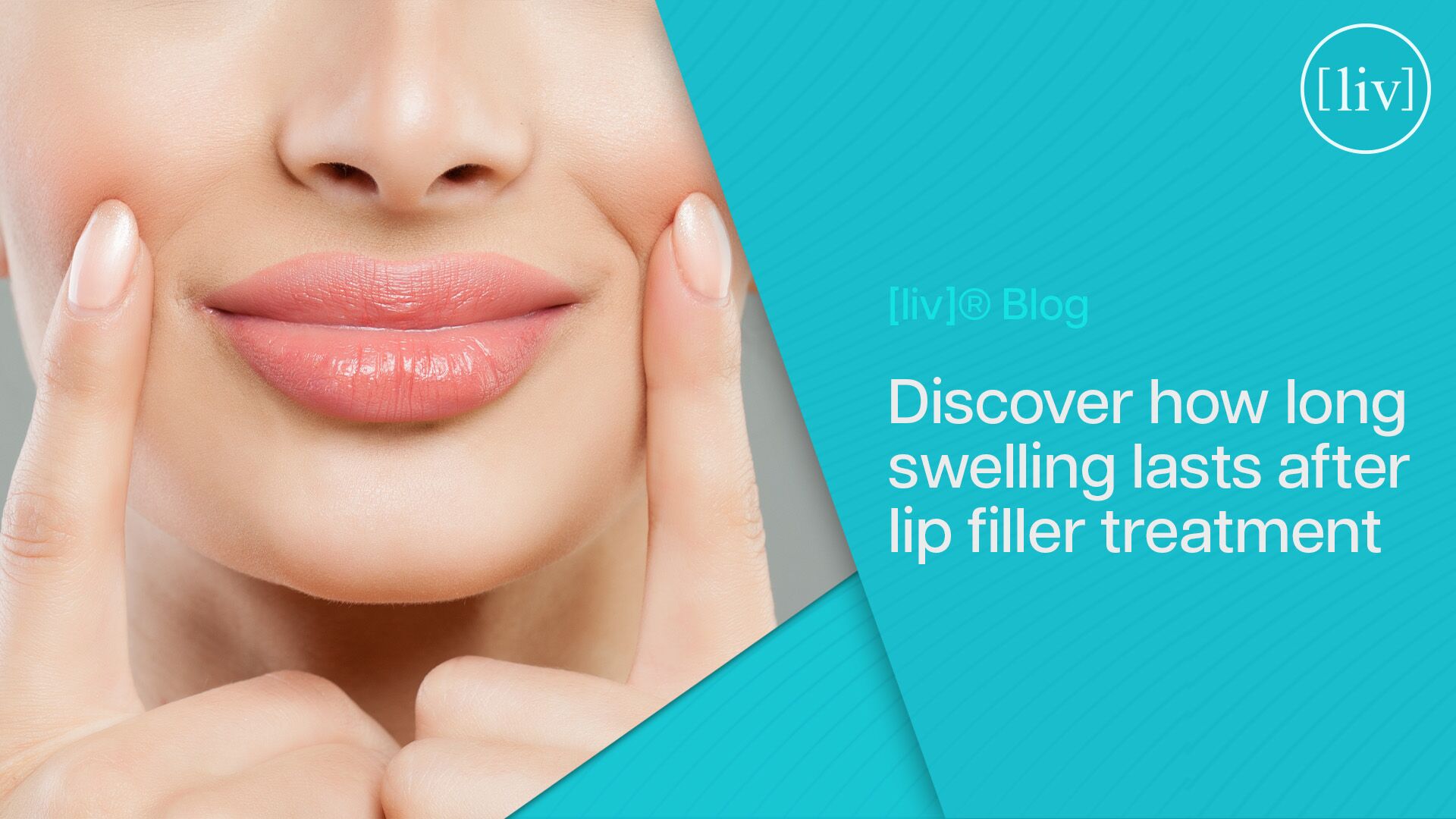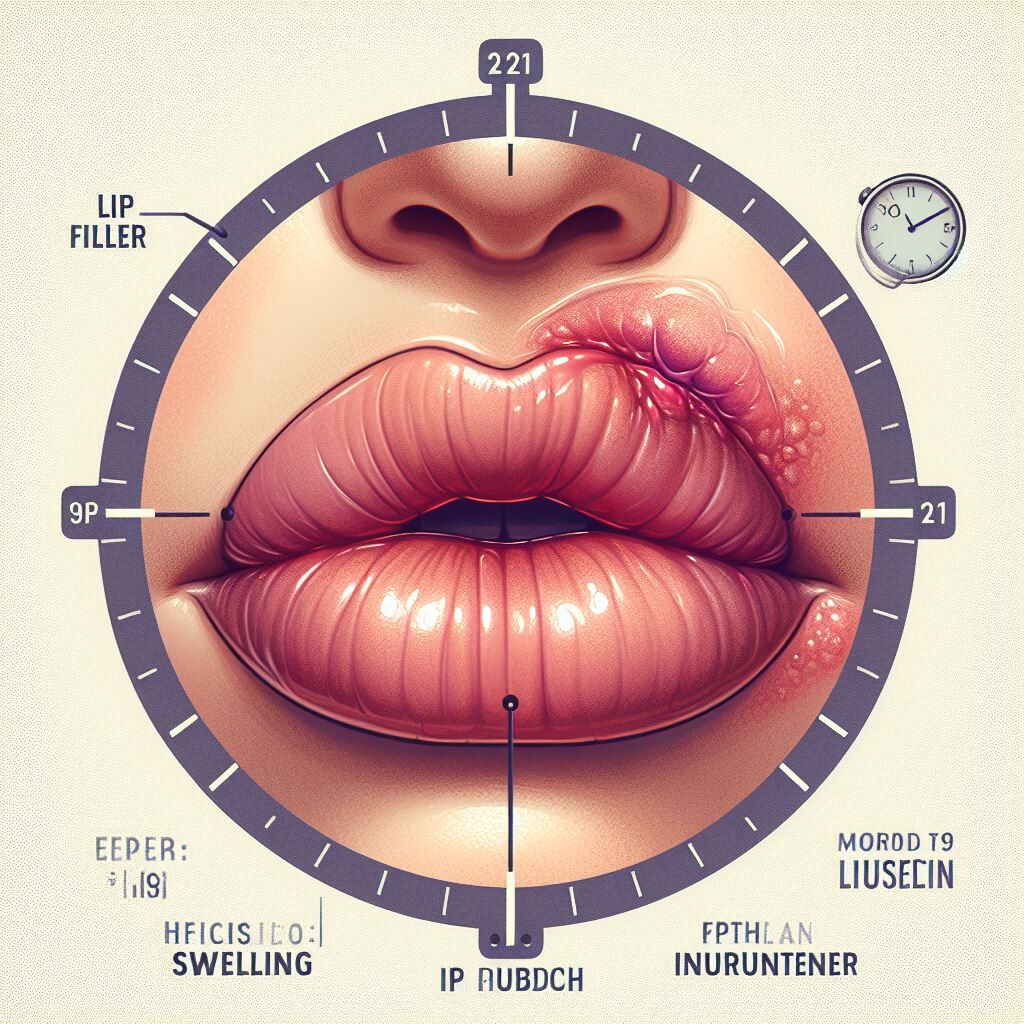Celebrate Mother's Day with Dr. Andrew Ress at [liv]
May 08, 2025
Shine Bright This Holiday Season: Unveil Your Best Self!
December 18, 2024

Discover how long swelling lasts after lip filler treatments, including peak swelling times, reduction phases, and tips for effective management. Learn what to expect during the healing process for optimal recovery and results.
It has become increasingly common to use lip fillers for enhancing the volume and shape of the lips, offering immediate results to those looking for fuller, more defined lips. However, a common concern among individuals considering this treatment is the length of time that they will experience swelling. Setting realistic expectations and preparing for the recovery process require an understanding of the typical timeline for swelling, from initial onset to complete resolution. It is the intention of this introduction to shed light on the swelling associated with lip fillers, to explore factors that influence the duration of the swelling and to provide insight into what individuals can expect following their treatment.
When it comes to enhancing your pout with lip fillers, one of the immediate after-effects you'll notice is swelling. This swelling is a normal part of the process, which signaled your body's response to the filler material. It is often surprising to experience swelling after a procedure, particularly in the first days following it. It is common for swelling to peak between the first and third days following the procedure. There is a possibility, during this phase, that the lips will appear overly volumized, thereby causing concern or discomfort, since they may seem excessively large.
As the days progress, especially around the 5-7 day mark, you will notice that both bruising and swelling will begin to diminish. This is a temporary state. As the swelling subsides, the lips begin to settle into their new shape, allowing the filler to be more visible. This is an important time in which patience is necessary, since the body is still adjusting to these new additions.
A period of 14 days is usually recommended to ensure a thorough and proper recovery, allowing the lips to fully adapt and reveal the final outcome. In order for the swelling to subside fully and for any minor adjustments or settling to take place, this two-week period is essential. Upon completion of this period, the lips should exhibit the desired volume and contour without the initial puffiness and swelling associated with the filler.
Patients are advised to follow post-procedure instructions closely to ensure a successful recovery. These instructions may include:
If the swelling does not subside within two weeks or if there are any concerns about the results, it is advisable to speak with your practitioner. Your practitioner will be able to assess the situation and provide any necessary guidance or corrective measures.
While the immediate aftermath of lip filler treatment can be uncomfortable and swollen, understanding the process and being patient will result in satisfactory results. It is important to follow the recommended aftercare instructions and allow sufficient time for healing so that you may fully enjoy the benefits of your enhanced lips.
There can be considerable variation in the duration and intensity of swelling following a cosmetic procedure, such as lip fillers or other injectables. There are a number of factors that influence this variability, each of which plays a role in the response of your body to the treatment. Understanding these factors can assist you in setting realistic expectations and preparing for the healing process. Here we examine the primary factors influencing swelling duration:

Some fillers are designed to be volumizing and may cause more swelling, while others are formulated to be gentler with less swelling. In comparison to other fillers, hyaluronic acid fillers, for example, are known to attract water, which can initially result in an increase in swelling.
It is important to note that the volume of filler injected plays a significant role in swelling. Naturally, larger volumes will result in more swelling, since the body has to respond to the increased volume of foreign material.
It is important that the technique and skill of the injector are evaluated. Techniques that minimize trauma to the tissue, such as using fewer injection points and gentle handling, are likely to reduce swelling.
A person's body responds differently to trauma and foreign substances. Some people will have a more vigorous inflammatory response, leading to more pronounced swelling. Factors including age, genetics, and overall health status can affect how the body reacts to trauma and foreign substances.
The sensitivity and density of blood vessels in certain areas of the body make them more susceptible to swelling. The lips, for example, are particularly sensitive and may swell significantly more than other parts of the body.
Swelling is influenced by lifestyle factors such as diet, hydration, and exercise. A large intake of salt, for example, can exacerbate swelling. Aftercare measures, such as avoiding strenuous activity and icing, can help to reduce the duration of swelling.
Medications, particularly those that affect fluid retention or blood clotting, can also contribute to swelling. People who suffer from certain health conditions, such as autoimmune diseases or allergies, might experience more pronounced swelling.
A previous treatment of the area, particularly a series of treatments, may result in a different response. Tissue that has previously been stretched or scarred may react differently to additional filler.
There are a number of strategies that can be used to minimize the impact of swelling duration, even though some factors are beyond our control:
It is important that individuals acknowledge these factors and take proactive measures in order to better manage swelling and enhance the recovery process following cosmetic procedures.
Swelling is a common and natural response to various medical and cosmetic procedures, injuries, or even day-to-day activities that may strain the body. While it's a sign of your body's healing process at work, excessive swelling can be uncomfortable, prolong recovery times, and, in some contexts, affect the aesthetic outcomes of treatments like injections or surgery. Here are some practical tips and tricks for managing swelling, ensuring a more comfortable recovery and optimizing the healing process.
As an example, propping up your legs above the level of your heart can be helpful if your legs or ankles are swollen. Elevation can significantly reduce swelling by encouraging fluid drainage away from the affected area. If your arms or hands are swollen, pillows can be used to elevate the limb.
The cold therapy can reduce fluid accumulation and temporarily numbs the area, providing relief from pain by constricting blood vessels. You can apply a cold pack or a bag of frozen peas wrapped in a towel to the swelling for 15-20 minutes at a time. Be sure there is a barrier between the cold source and your skin to prevent ice burn.
The consumption of water assists in flushing toxins from your body and reduces swelling. Proper hydration maintains a balance of fluids within your body, thus preventing excessive accumulation in any one area.
It is well known that salt can cause your body to retain water, exacerbating swelling. Reducing your salt intake can help minimize this effect. It is therefore recommended that you eat fresh, unprocessed foods which are naturally lower in sodium.
A healthy diet is characterized by fruits, vegetables, whole grains, and lean proteins that contain antioxidants and anti-inflammatory properties. Some foods, such as pineapples and cherries, have natural anti-inflammatory properties that can also help reduce swelling in the body.
The use of gentle movement and exercise can also contribute to the reduction of swelling by improving circulation and assisting in the mobilization of fluids. Consult with your healthcare provider to determine the appropriate level of activity for you.
It is important to use compression garments in certain types of swelling, such as those caused by surgery or injuries in the extremities, to provide support and encourage fluid to move out of the affected area. Ensure the garment is fitted properly and is used according to the instructions provided by your healthcare provider.
To stimulate lymphatic drainage, it is beneficial to massage gently around the swollen area, but it is important to avoid direct pressure on the swollen area. For the best results, consider receiving a professional lymphatic drainage massage.
Several natural remedies and herbal supplements, including bromelain (found in pineapples), turmeric, and arnica, may reduce swelling. If you are taking medications or have underlying health conditions, you should always consult your healthcare provider before beginning any new supplement.
Occasionally, over-the-counter or prescription medications may be required to treat swelling, especially if it is caused by an allergic reaction or severe inflammation. Always follow your healthcare provider's advice regarding medication usage.
You should keep an eye on the swelling and any other symptoms you may be experiencing. If swelling worsens, spreads, or is accompanied by fever, redness, or persistent pain, seek medical attention as these could be signs of an infection.
The ability to manage swelling effectively is crucial for comfort, recovery, and, in the case of aesthetic procedures, the final result. By following these tips and tricks, you can promote your body's healing process and potentially speed up the healing process.
Applying ice and cold compresses immediately after your lip filler procedure is highly recommended for relieving and minimizing swelling. To alleviate and minimize inflammation, applying ice is highly recommended. Additionally, it is recommended that you maintain your head in an elevated position while sleeping or resting in order to facilitate a smoother recovery process.
The first 48 hours following your procedure are crucial for healing. Ice should be applied to your lips multiple times throughout the day. Do not let the ice touch your lips directly.
Typically, this process concludes naturally after approximately 2 to 4 weeks of integrating lip filler with your natural tissue beneath your skin. If you detect any firm lumps persist without improvement or remain a concern four weeks after treatment, you might need to schedule a follow-up appointment to assess your lips.
There will be no sagging or stretching effects on your mouth or lips as the transition occurs progressively—you will not experience an abrupt loss of volume overnight. The continuous natural aging process may lead to your lips appearing slightly aged as the filler diminishes over time.
It is normal for people to experience swelling following lip fillers. It is expected that the intensity and duration of swelling will peak within 48 hours of treatment, but the intensity and duration can vary from person to person. After the first week, most individuals will experience a significant reduction in swelling, which usually resolves completely within two to four weeks.
During the healing process, it is very important to follow instructions, such as ice application, keeping the head elevated, and avoiding certain activities, to ensure that swelling is controlled effectively. To ensure optimal outcomes and satisfaction with your lip filler treatment, it is important to remain patient during the healing process and to discuss any concerns about prolonged swelling or other complications with a healthcare professional.
May 08, 2025
December 18, 2024
Copyright © Liv Plastic Surgery 2026. All Rights Reserved

Consultations are complimentary in person or virtual.
We love our out of town patients!
